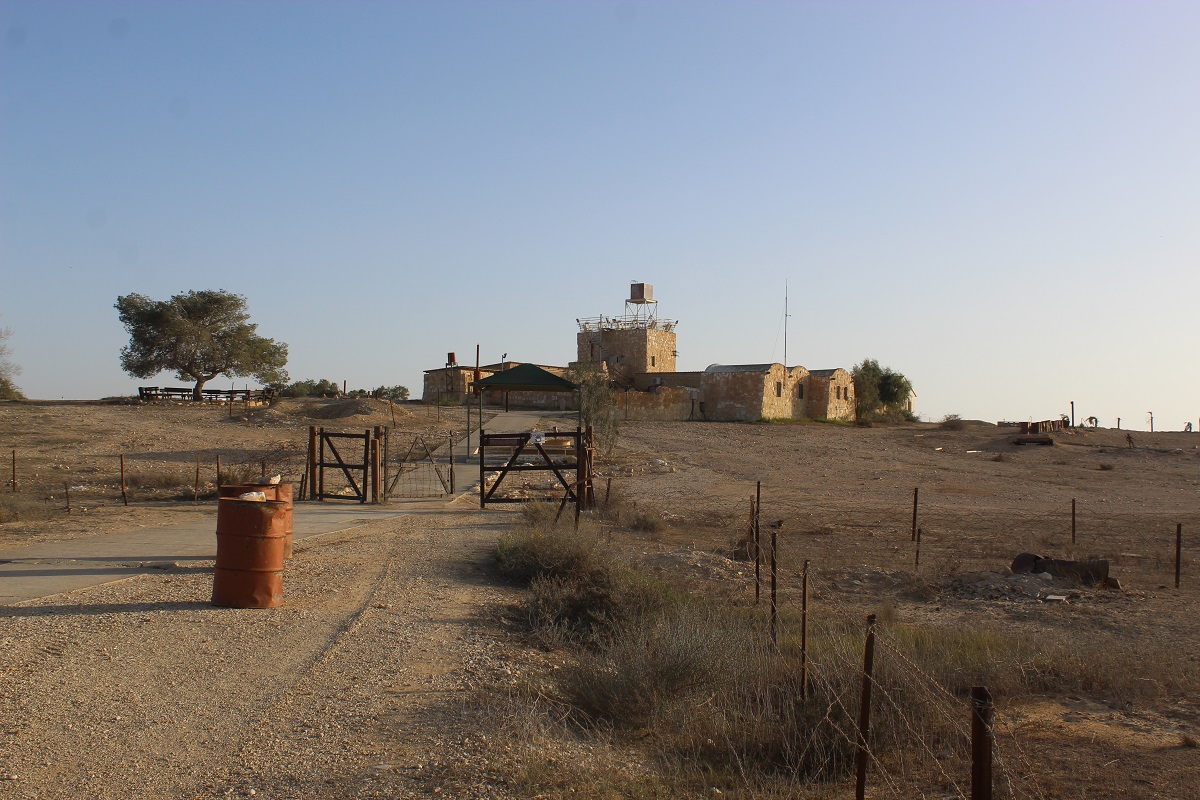
A great place to visit that is finally opening to the public
For the last twenty years, the mere mention of Mitzpe Revivim would send me into a fit of mild depression. Not that the place in itself was depressing, as a matter of fact, quite the opposite, but because it was always closed.
It would only open when booked by a group and the marketing being far from aggressive, they were very few of them.I came to know Mitzpe Revivim when I first came to the Negev as a PhD student 23 years ago. My first job in the area was to guide groups of American and French teenagers coming to Israel with their youth movement. Most of the time, I was guiding them in Ben Gurion’s desert home which was penitence for all parties involved. At the time, the exhibition was extremely old-fashioned and boring (luckily, it’s been completely redesigned) and getting the teenagers interested was quite the challenge. From time to time, they would be lucky enough to also have a tour of Mitzpe Revivim in their itinerary and the experience was astonishingly different. They were immediately and effortlessly engaged both by the story and the place itself and the hardest part of the job was to announce that the tour was over!
I consider the place to be not only highly interesting, but also of the utmost importance when it comes to the history of Jewish settlement in the Negev. The fact that the whole exhibition is of high quality just made it even sadder that we could not send anyone there. To me, it was nothing short of a tragedy!
But things have recently changed. There is a new team in charge, much more energetic and aware of the power of the place and it is now open every day. Not only that, but it is also part of a Ministry of Culture program and there is no entrance fee on Shabbat (mind you, the entrance fee during the week is fairly symbolic – about 20 shekel per person).
Based on the merit of the place, I hope it will soon be so packed with visitors that they will invest in a theatrical tour of the quality of the one in Shivta (I hear it is being discussed).
The fascinating tale of Mitzpe Revivim
So what is so enticing about this place? First of all, the whole story. It has everything to make an excellent movie, hard-working pioneers, the relationship with the Bedouin neighbors, carrier pigeons, war, tragedies, failure, success and abandon.
Listen to this. The first group of (3) pioneers arrived in July 1943. At the time, following the British White Paper of 1939, the Negev was considered Arab territory and therefore, Jews were forbidden to settle it, something Ben Gurion couldn’t stand for. In order to be allowed to settle this land that had already been purchased by KKL in 1935, they had to come under the pretense of doing some meteorological and agronomical research work and until after the independence war, it was – by far – the Southernmost point of Jewish settlement.

While looking for a place to settle down, the three found two Bizantine caves which they felt would protect them from the elements and after settling in one of them, they went on to work. The group became bigger and despite many difficulties (and many giving up), they finally managed to build a dam (don’t miss the full story of the most stubborn ingineer Dov Kublanov) and to make their first harvests. So much so that when the UNSCOP research committee came to Palestine in order to decide how to proceed to the partition, they visited Revivim in June 1947, and having seen what the Jews had managed to grow in the desert, they were so impressed that it was decided to give the Negev to the Jews.
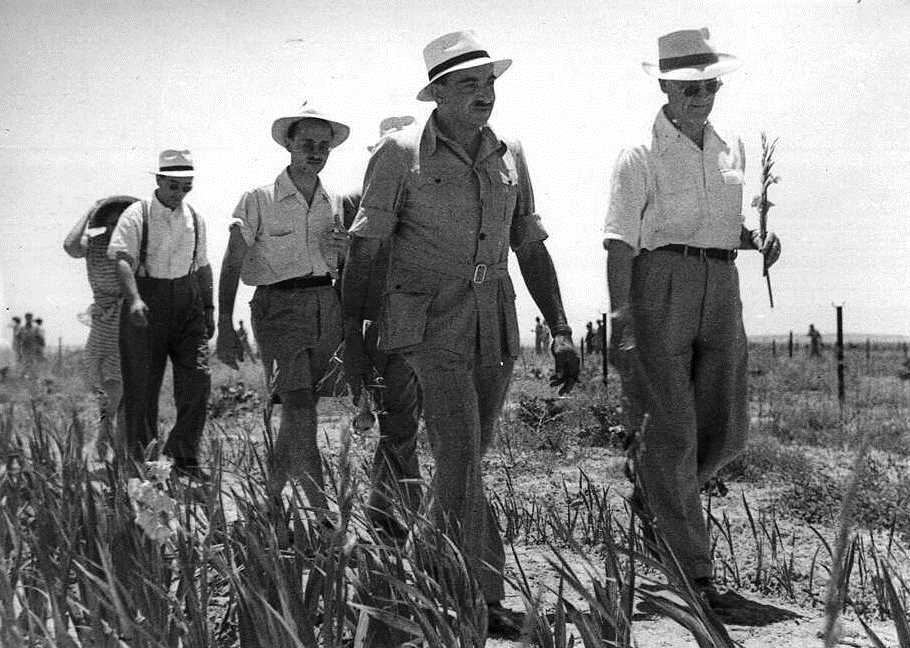
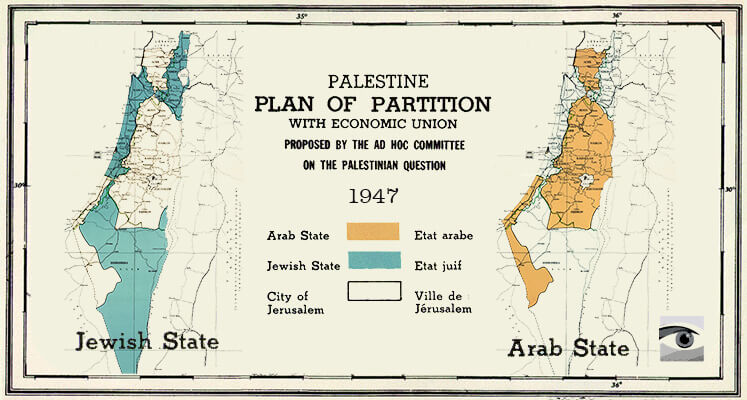
How about that! And I haven’t even started with the pivotal role it played during the war of Independence in keeping the Negev, nor about all the hardships when Mitzpe Revivim was completely cut off from the rest of the Yishuv as the Egyptians were controlling all the surrounding hills. Planes (which are part of the exhibition) had to land there to bring food, medical supply or evacuate the wounded, so that this outpost used by the Palmach would resist and enable the Jews to keep the entire Negev.
I warned you didn’t I? Did Mitzpe Revivim play an important role in the history of the creation of the State and the Jewish settlement of the Negev or what? In my humble opinion, a visit to Mitzpe Revivim is a must just like a visit to Ben Gurion’s desert home.
But what’s in there to see?
Anyway, this was just a teaser as the whole tale is told in great details in a movie (translated in several languages) shown at the entrance of the site, right next to the most impressive replica of the dam built by the first settlers, which will enable you to really grasps the difficulties and challenges.
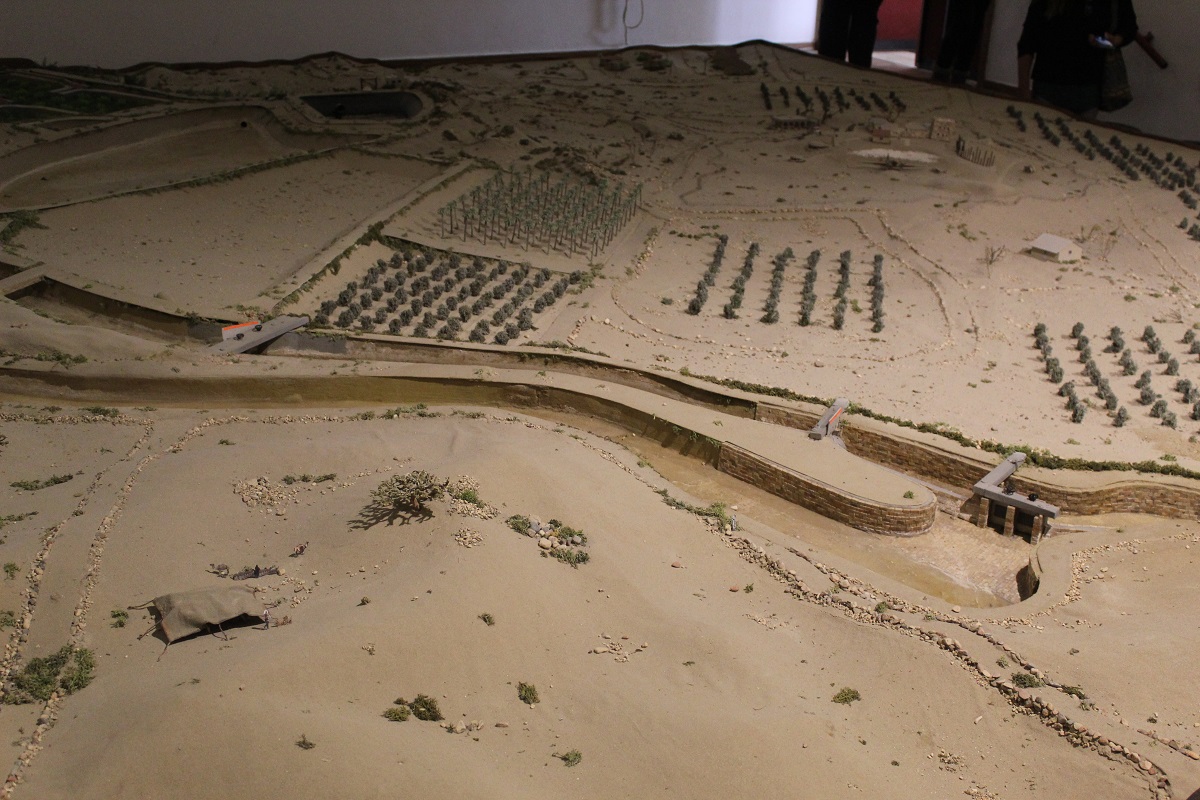
Knowing more about the place and it’s history, you are well equiped to start the visit. Nevertheless, if one is available, it is worthwhile to wait for a guide as he will add many fascinating anecdotes.
The first thing you stumble upon is the meteorological station, a mere pretexte for the creation of the settlement, which they nevertheless had to use diligently in order to satisfy the British.
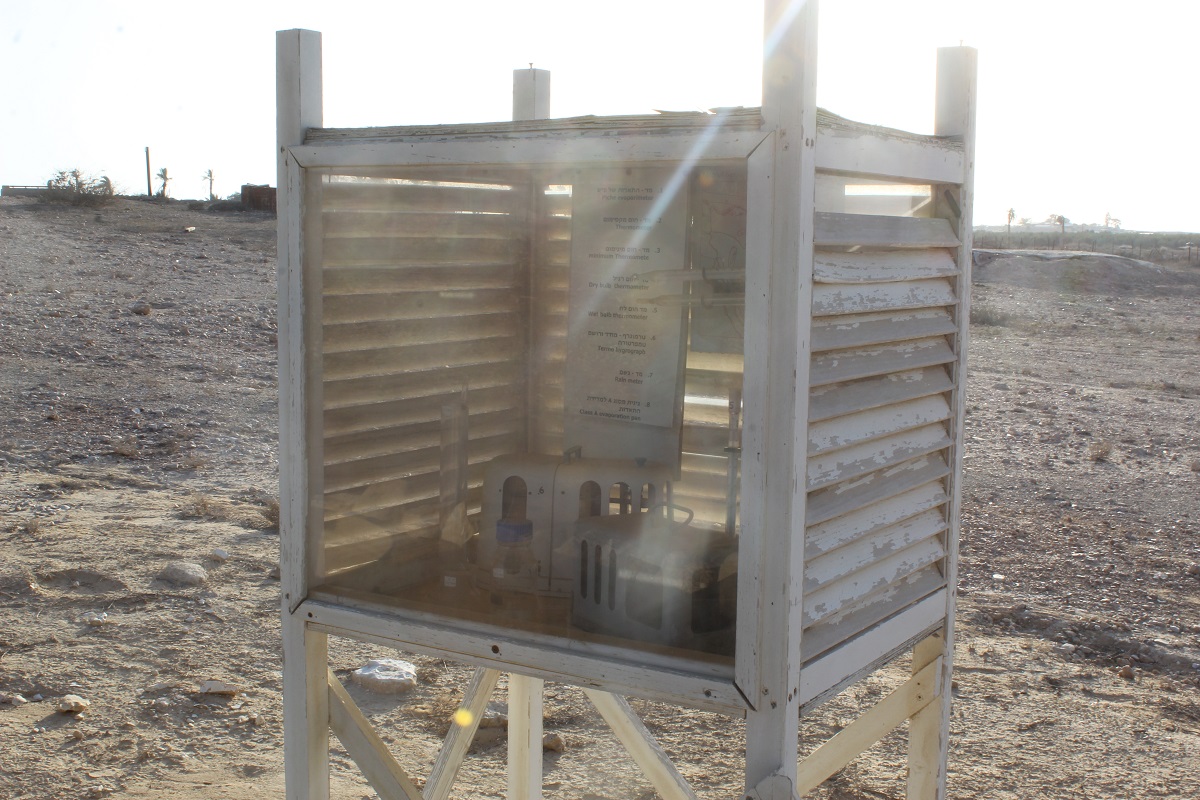
Followed by the two Byzantine caves with their air pipes (which played a major – if unintended role – in defending the area. The Egyptian aviation was on it’s way to bomb the site, but seeing the pipes from far away, they came to believe it was heavily defended and decided turn away.
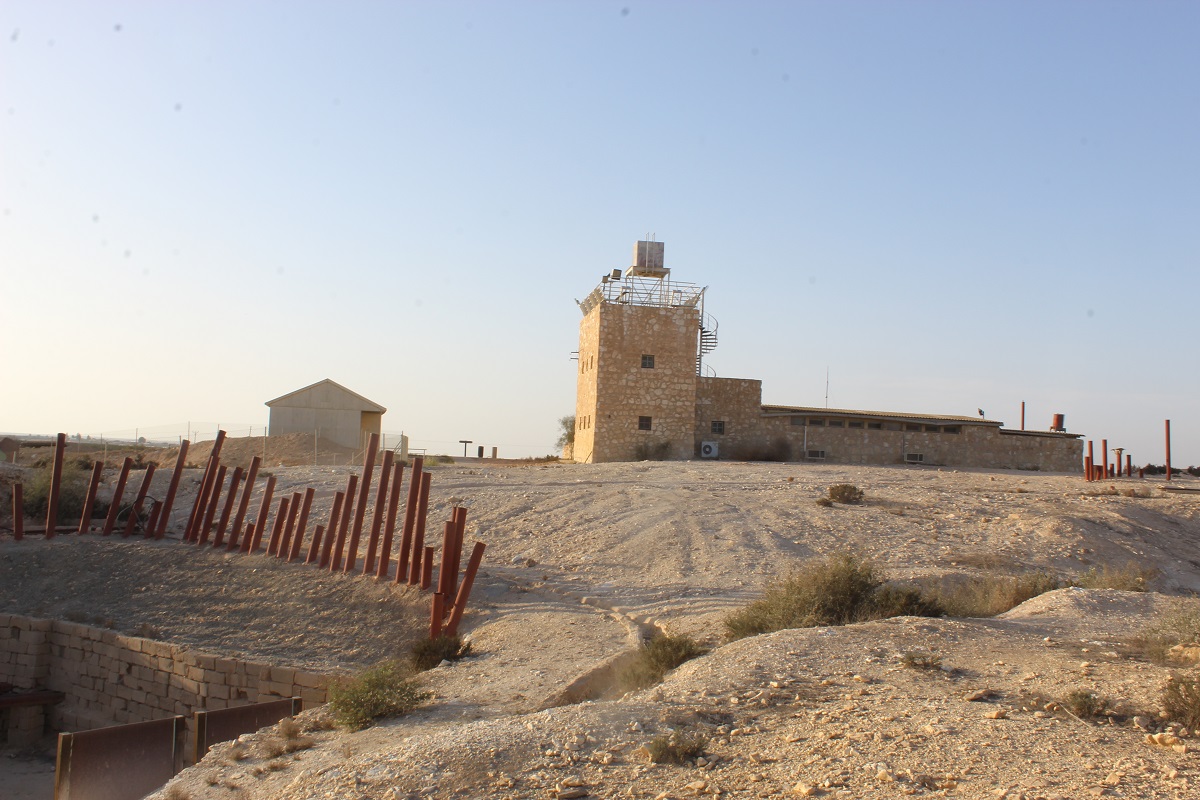
Inside the caves, several exhibitions show how they were used at different periods (first as a shelter,
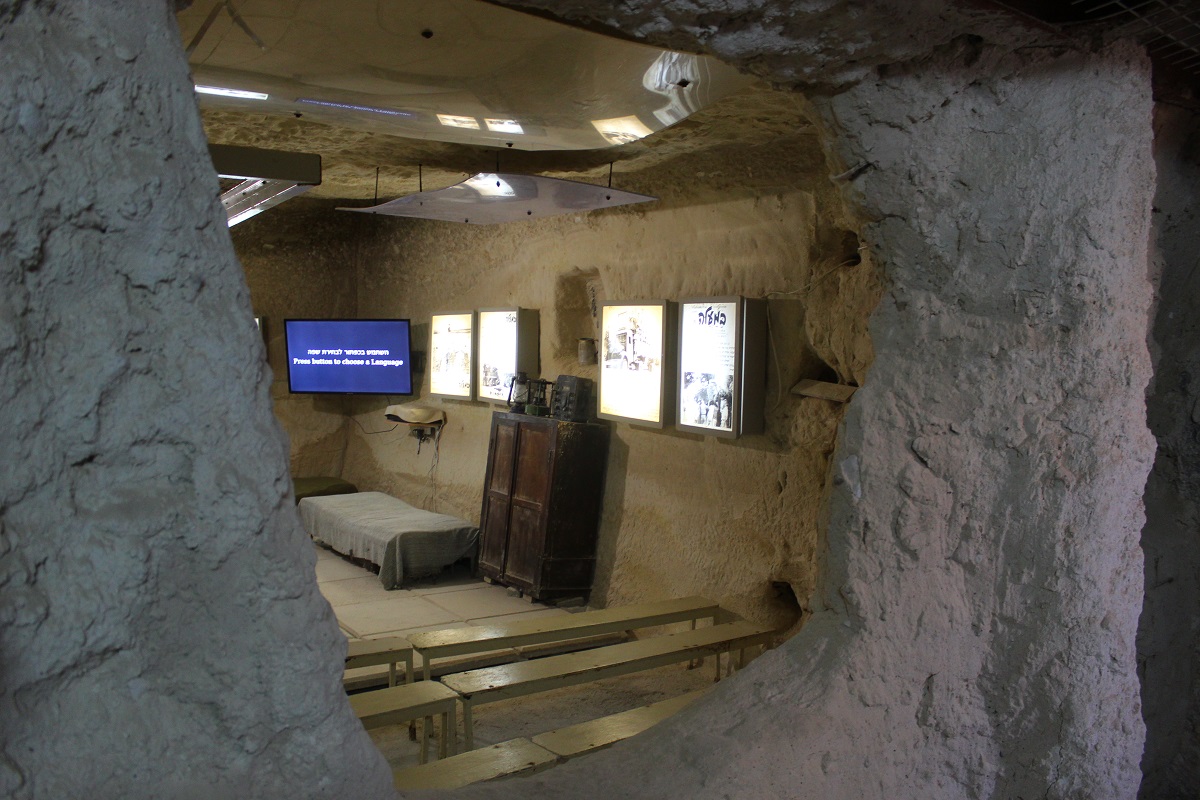
then a workshop
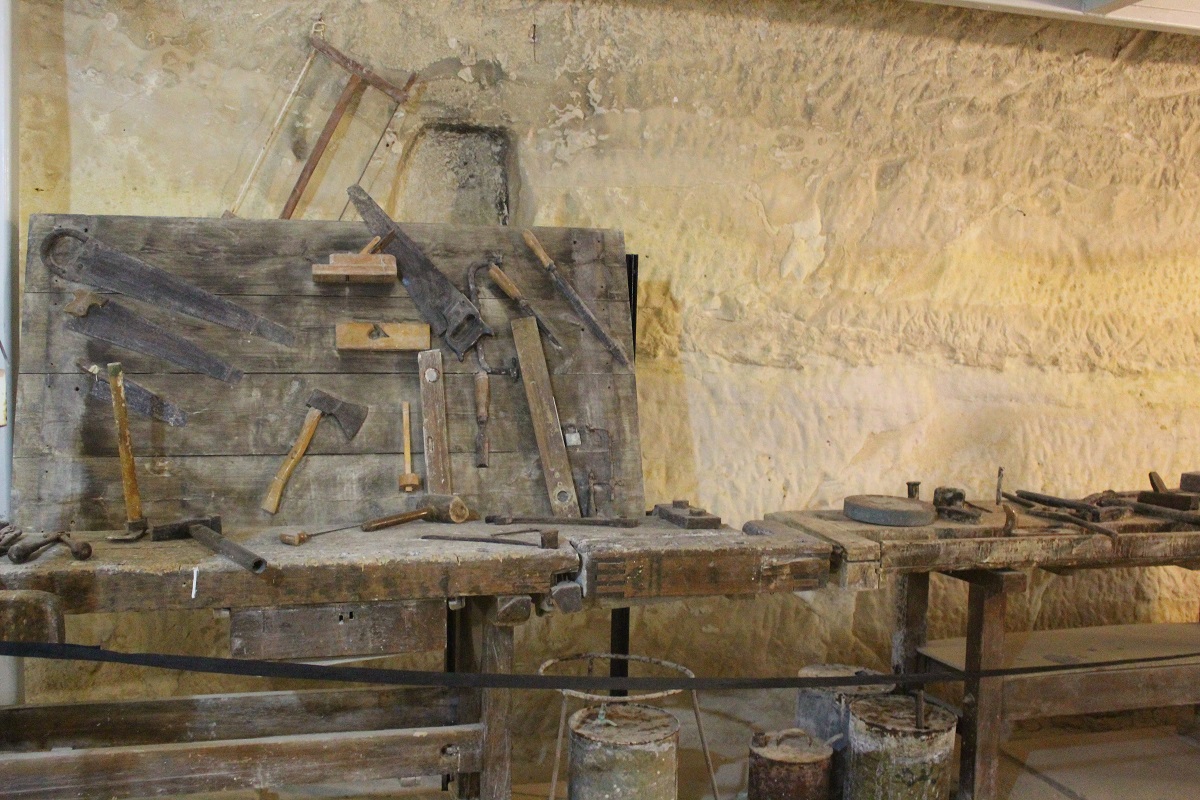
a field hospital 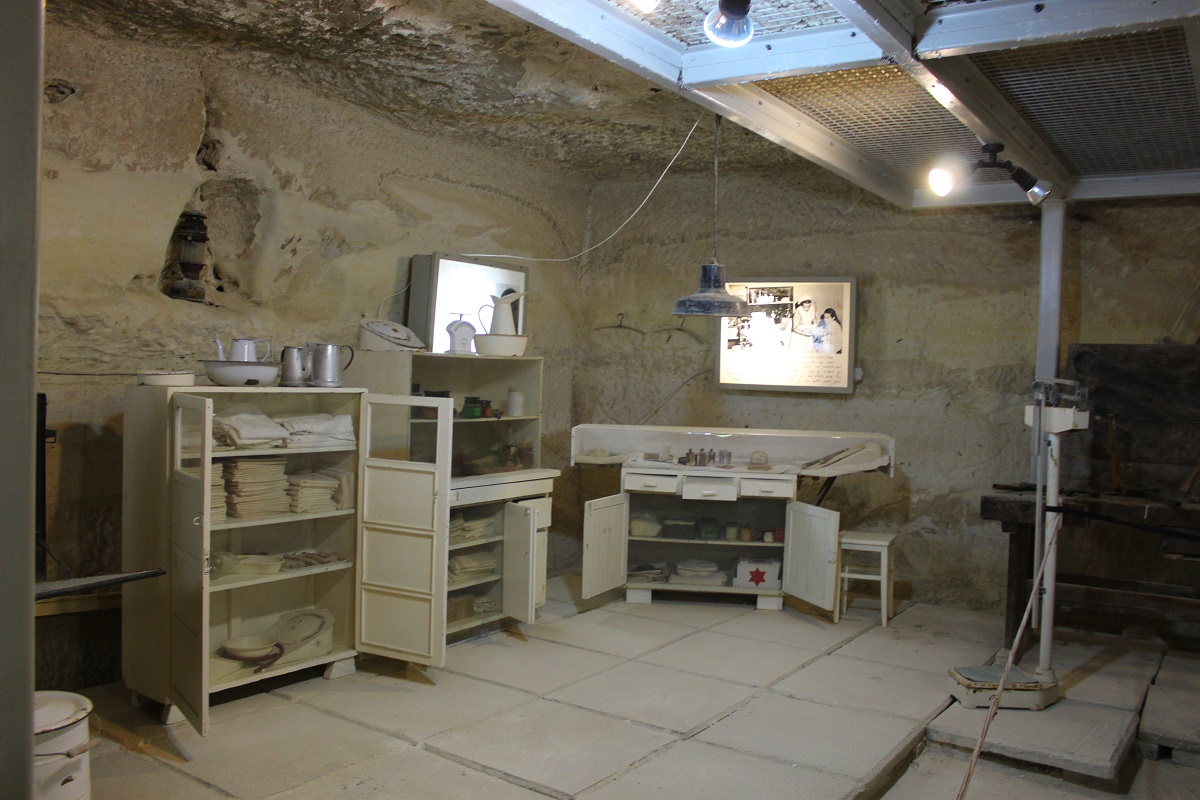
and Palmach HQ during the war of Independence.
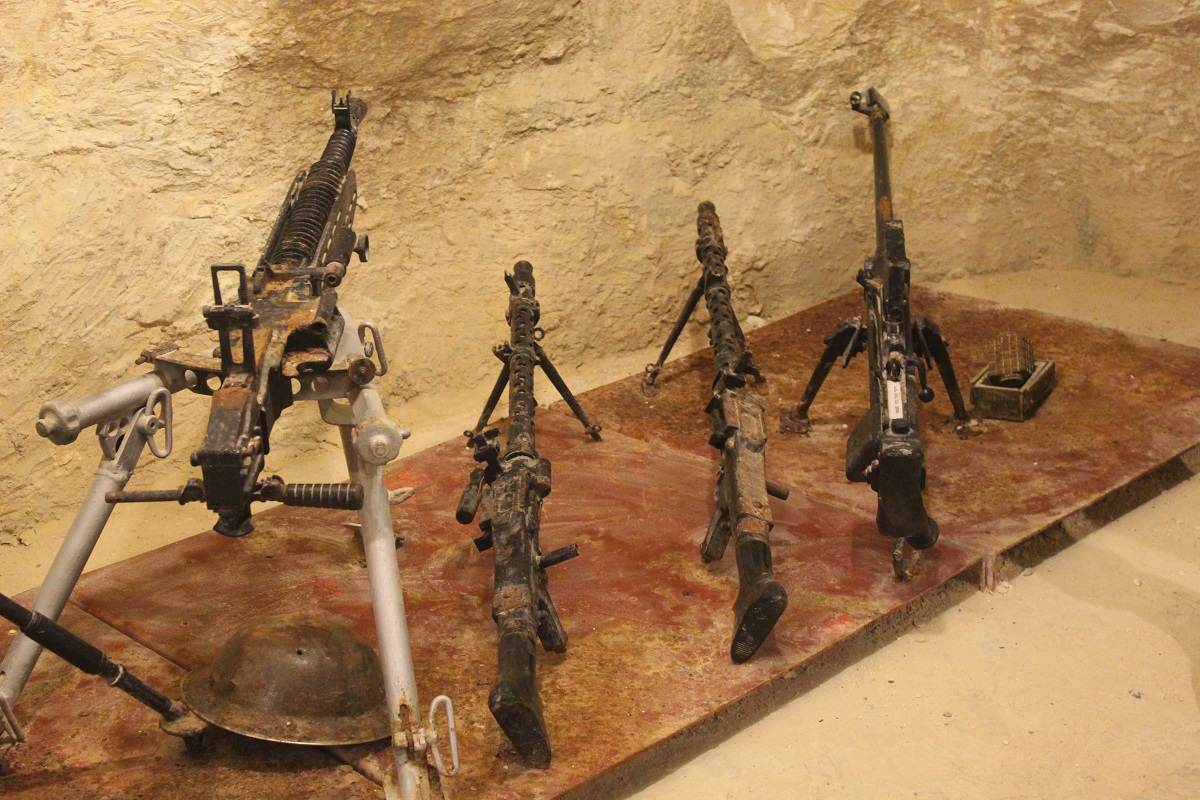
The path you follow then takes you through some old agricultural equipment
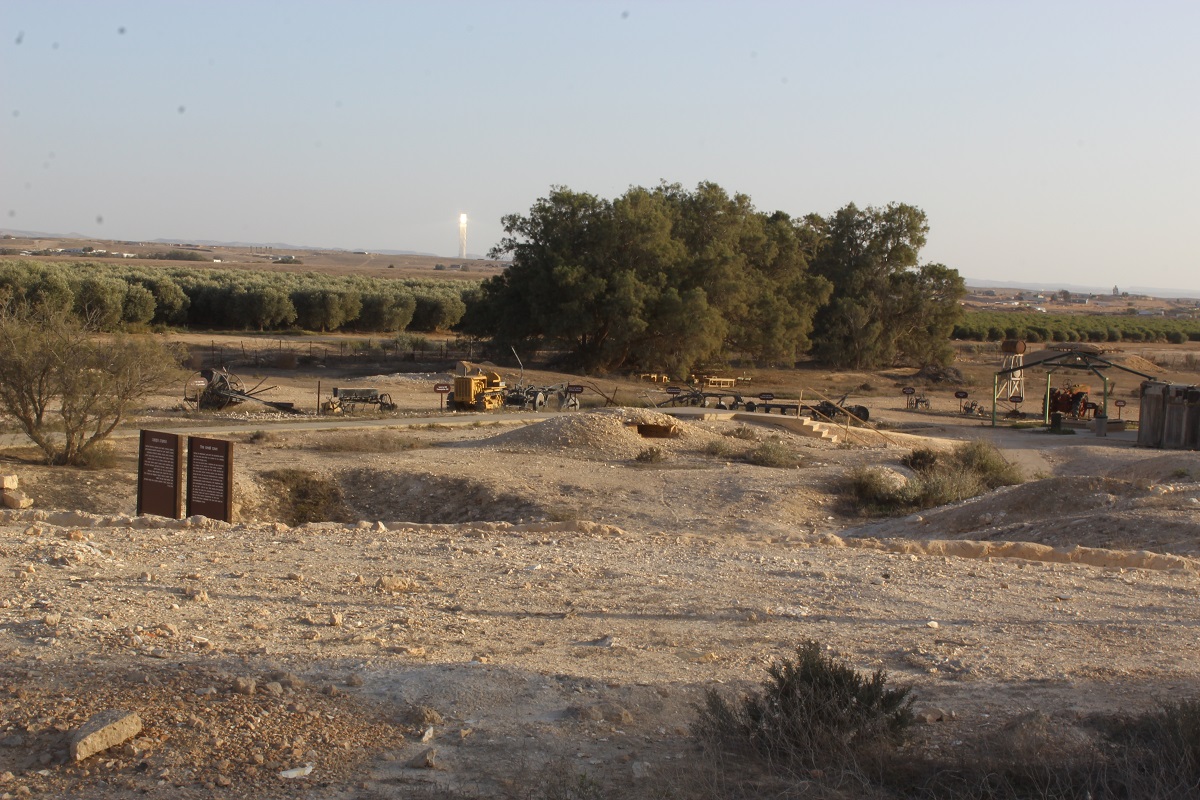
cleverly displayed just as you walk along the olive groves of the actual kibbutz which is quite a big olive oil producer. Notice also the impressive solar tower, always in the background wherever you are in the area.
You then reach the two planes:
A small Auster used from 1945 in order to bring mail, supply, proceed to a rapid evacuation if needed (the journey to Tel Aviv area was neither a short, nor a simple affair as it is today) and aerial reconnaissance.
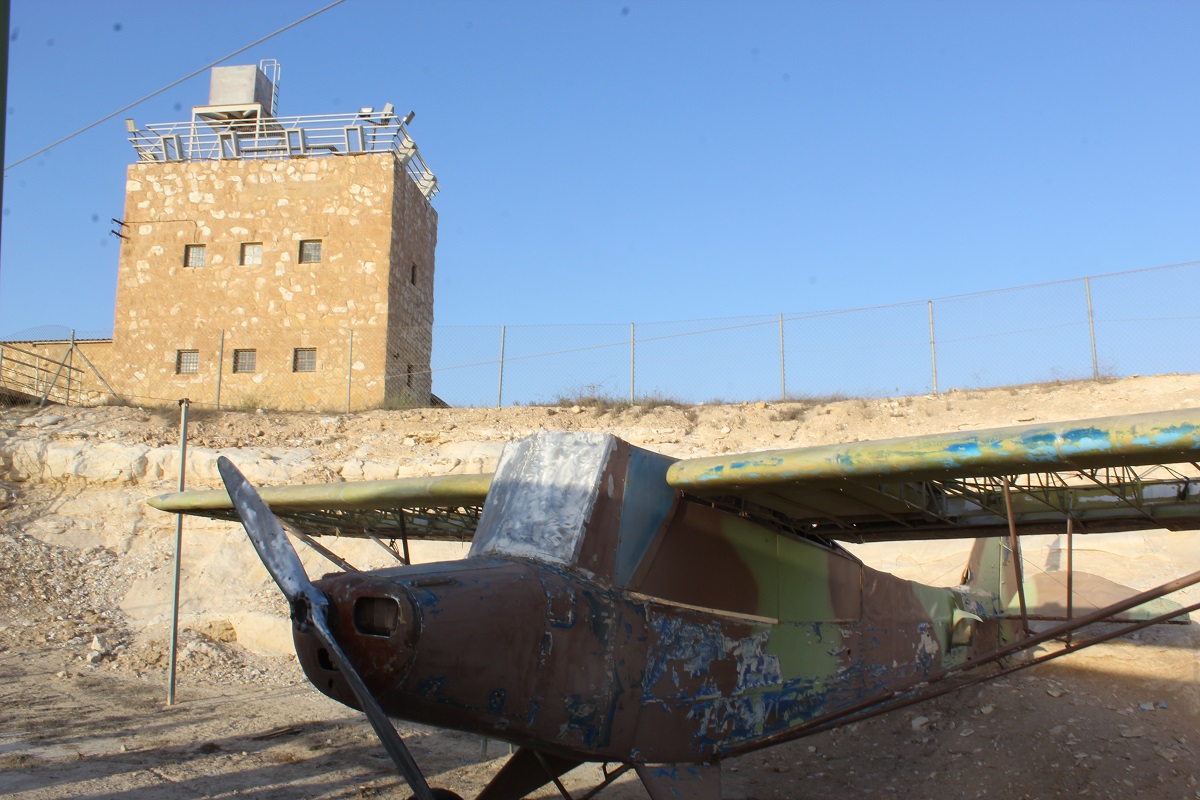
And a bigger one, a Dakota DC3 which served the same purpose during the war of independence. It is definitely one of the highlights of the visit for children and adults alike, especially since you are permitted to enter the plane!
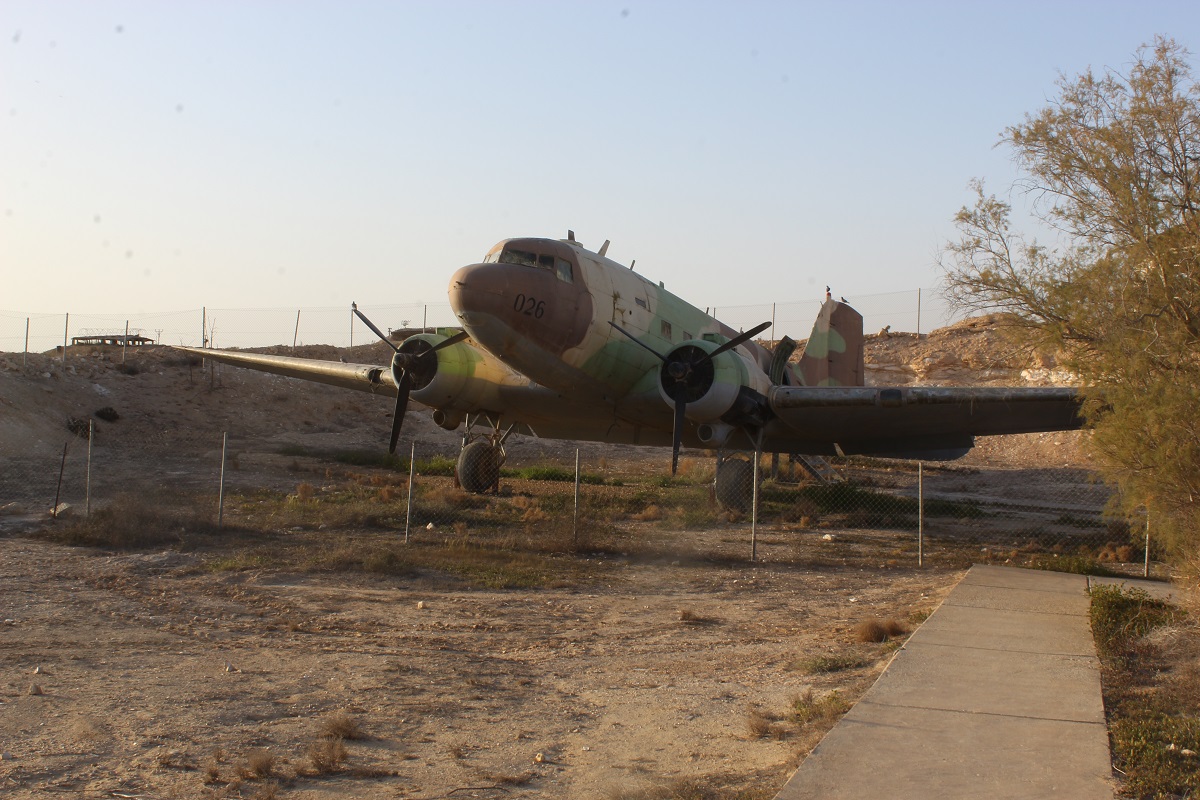
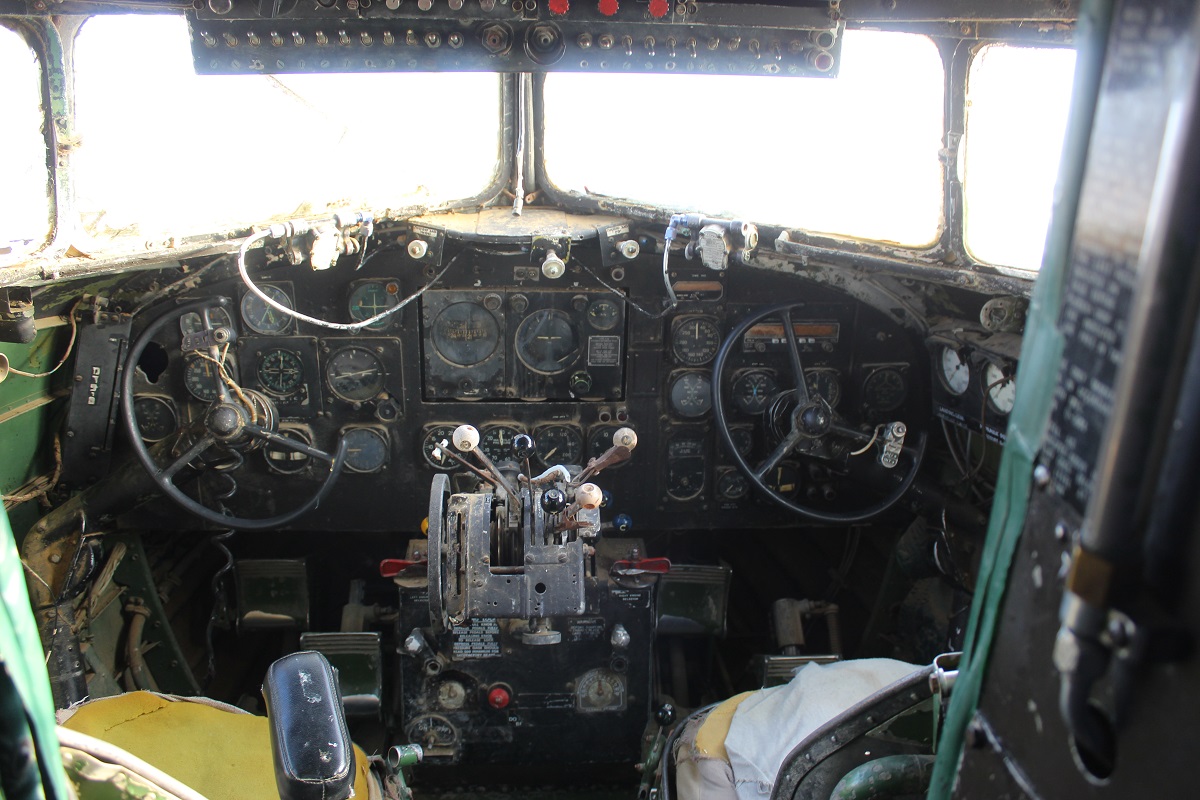
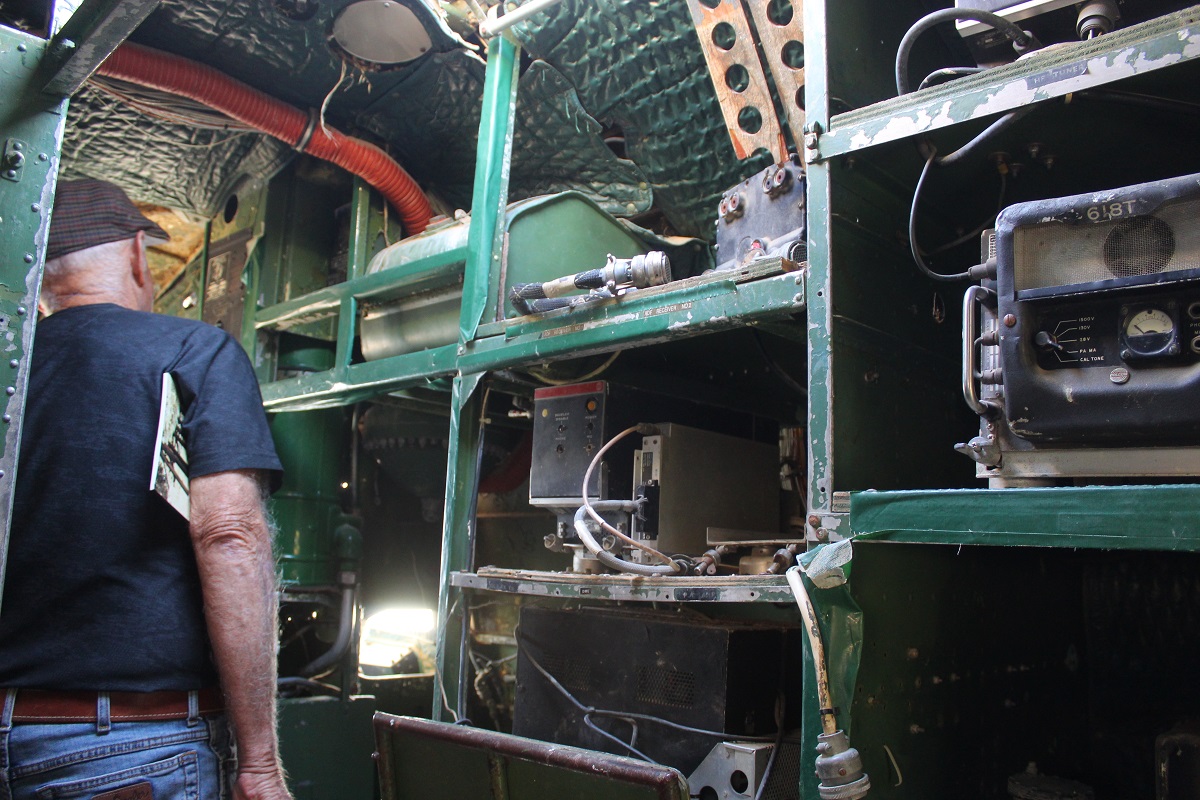
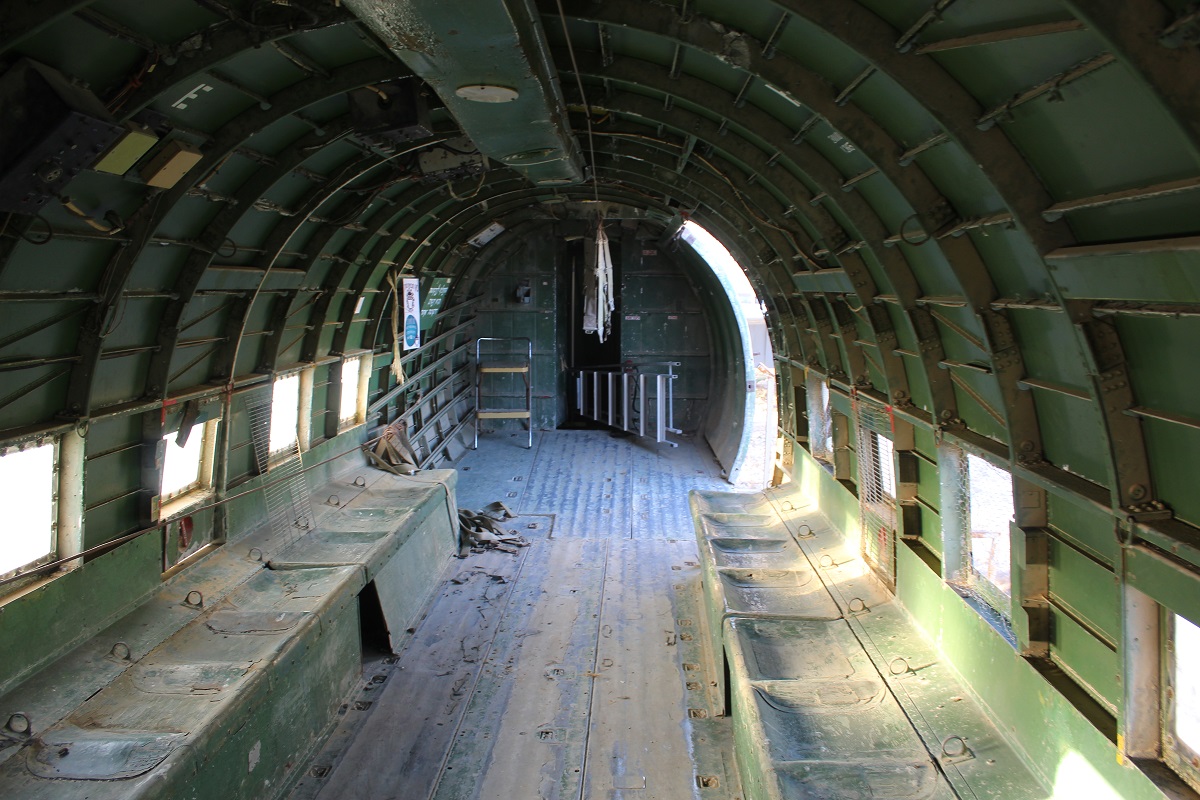
The visit ends with the living quarter built during the first few years. The usual lookout setup: several rooms organized around a square courtyard and a watchtower. Each room has a nice display enriched by original photos.
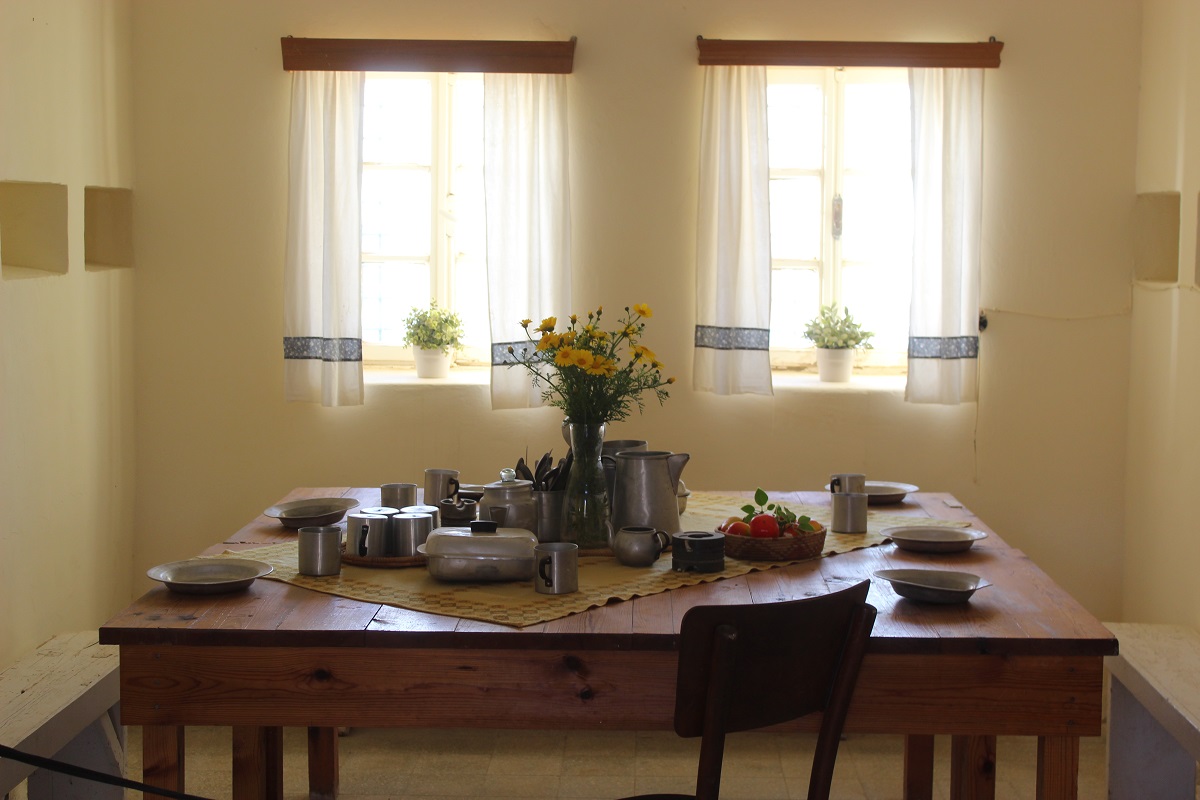
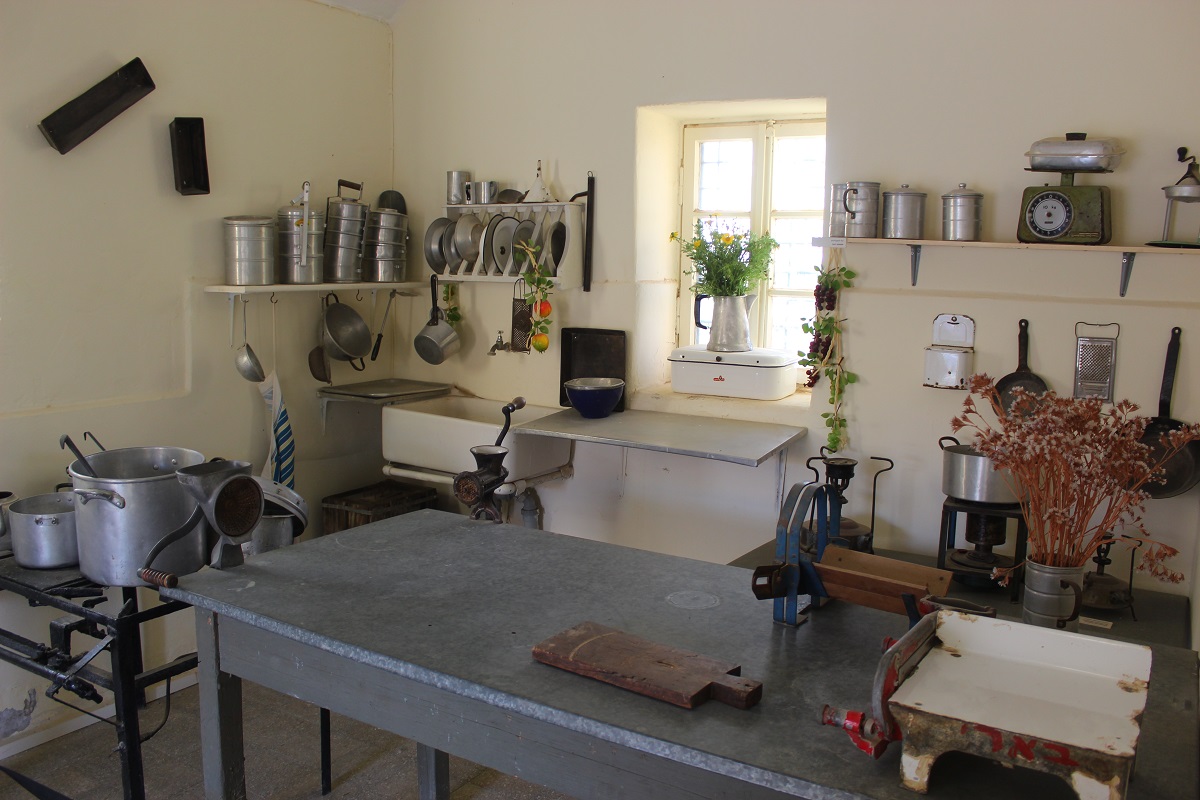
A charming exhibition
The exhibition is quite charming, somehow interactive and full of humor. But when you open a door and you find yourself in a bedroom with a full size puppet of a man sleeping in a bed and snoring loudly, it is not just for the fun of it.
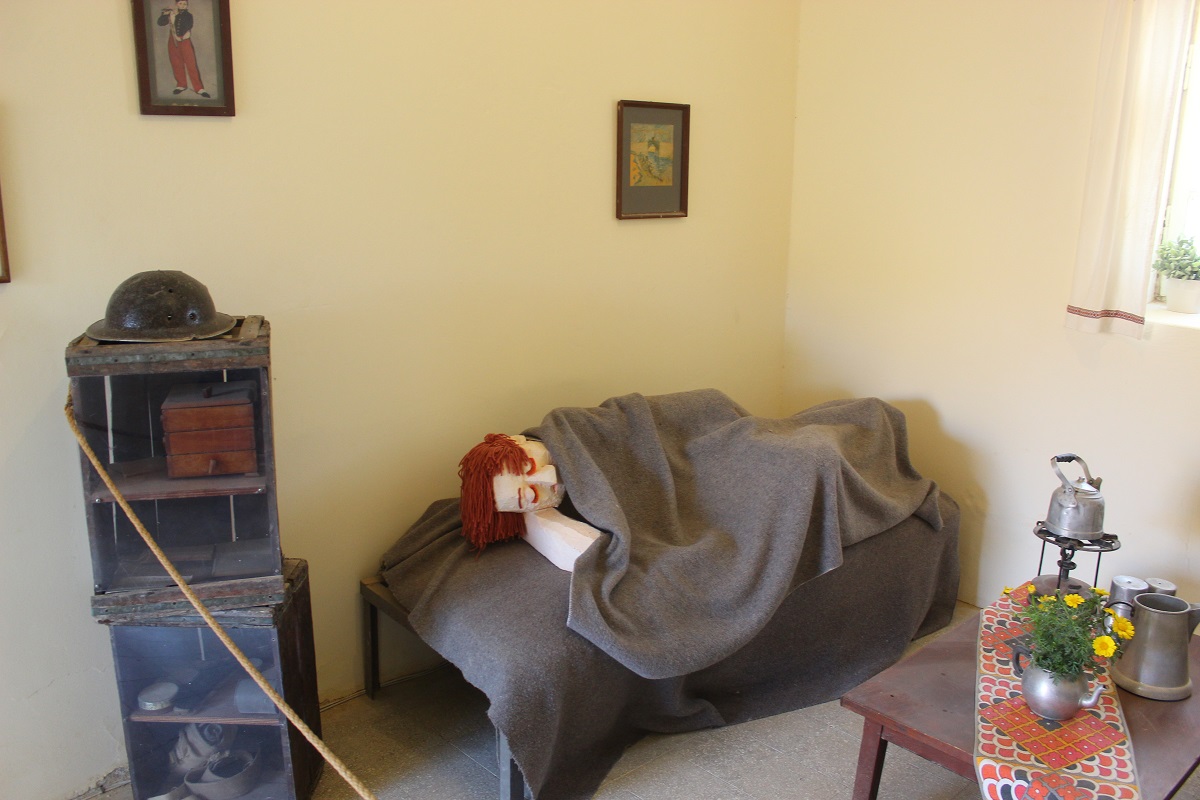
It has a purpose, it is indeed a clever way of showing the subterfuge used in order to hide all the illegal radio equipment found in the next room.
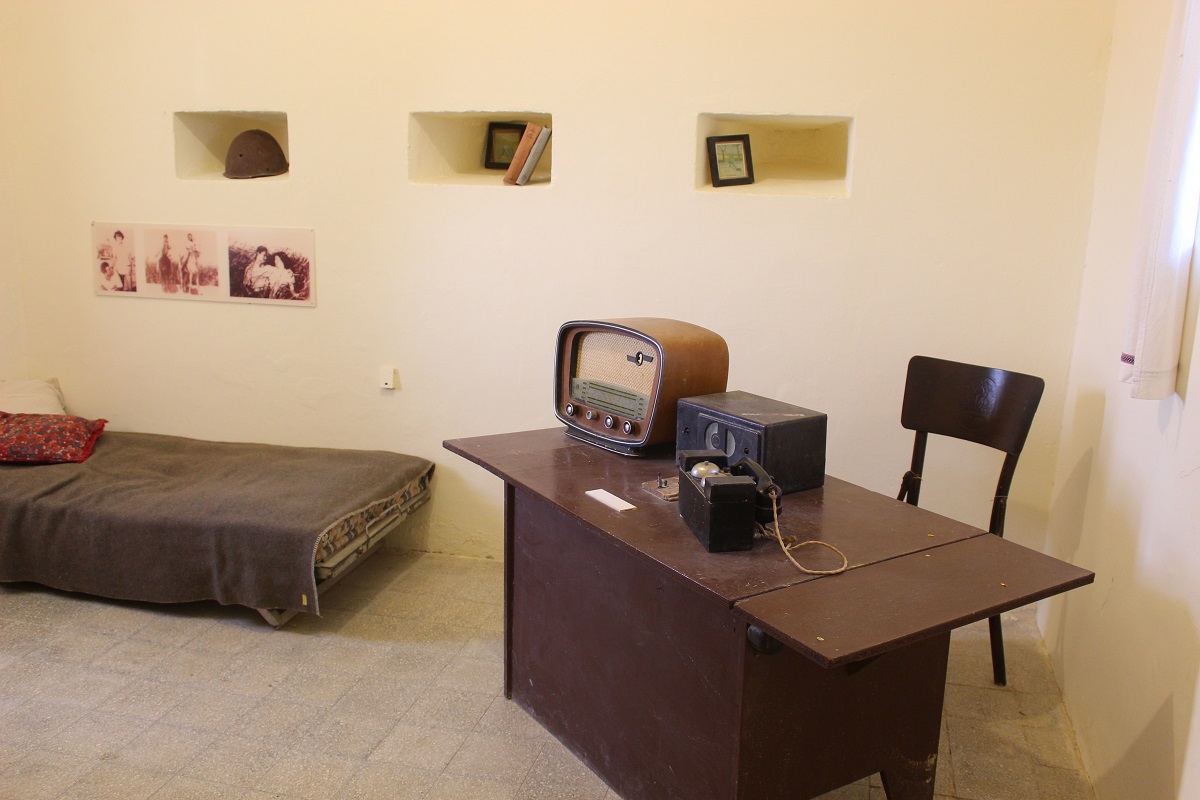
As it was strictly forbidden for them to have such equipment, whenever a British soldier would pay a visit in order to search for illegal arms and communication means, someone would quickly jump in the bed and pretend to be asleep. The British soldier as ever so polite, would quickly utter some apology and close the door, looking no further.
Whenever allowed, don’t hesitate to try and play with the exhibition. An excellent way to teach your kids what a slick was!
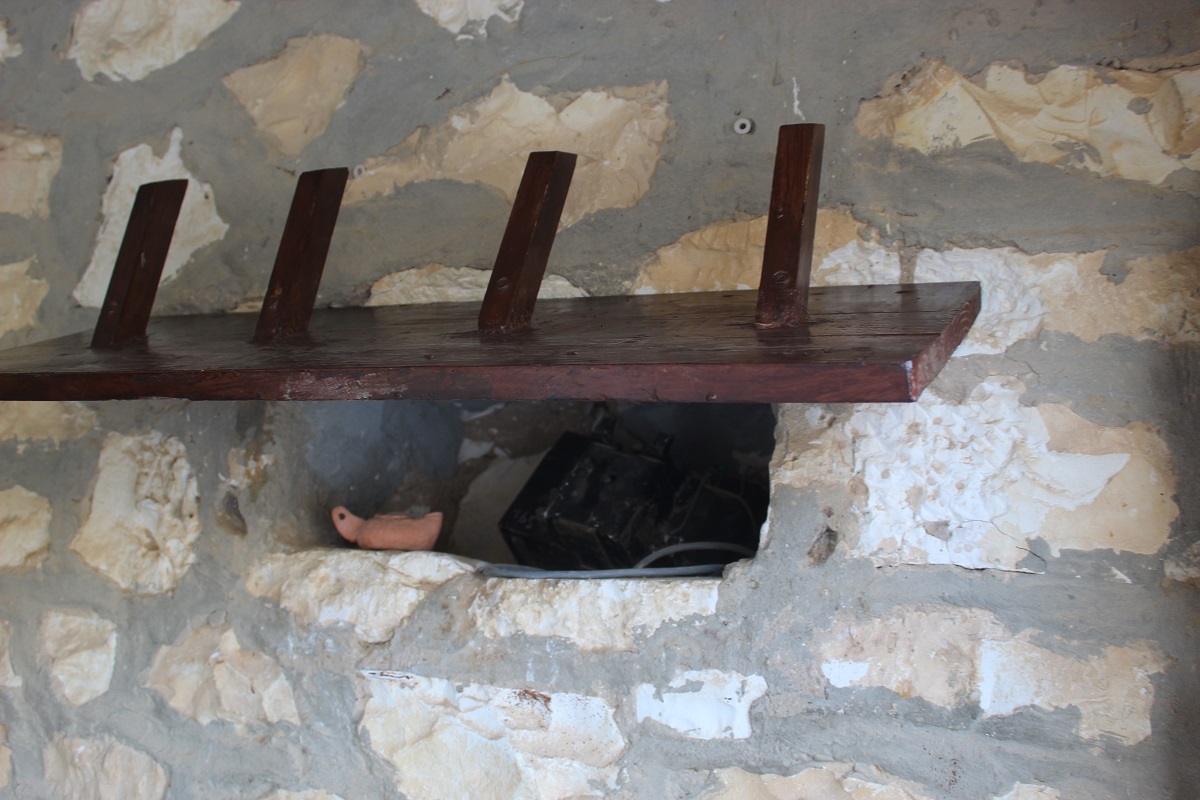
And last but not least, one of the features that make the place a complete paradise for children: the trenches…
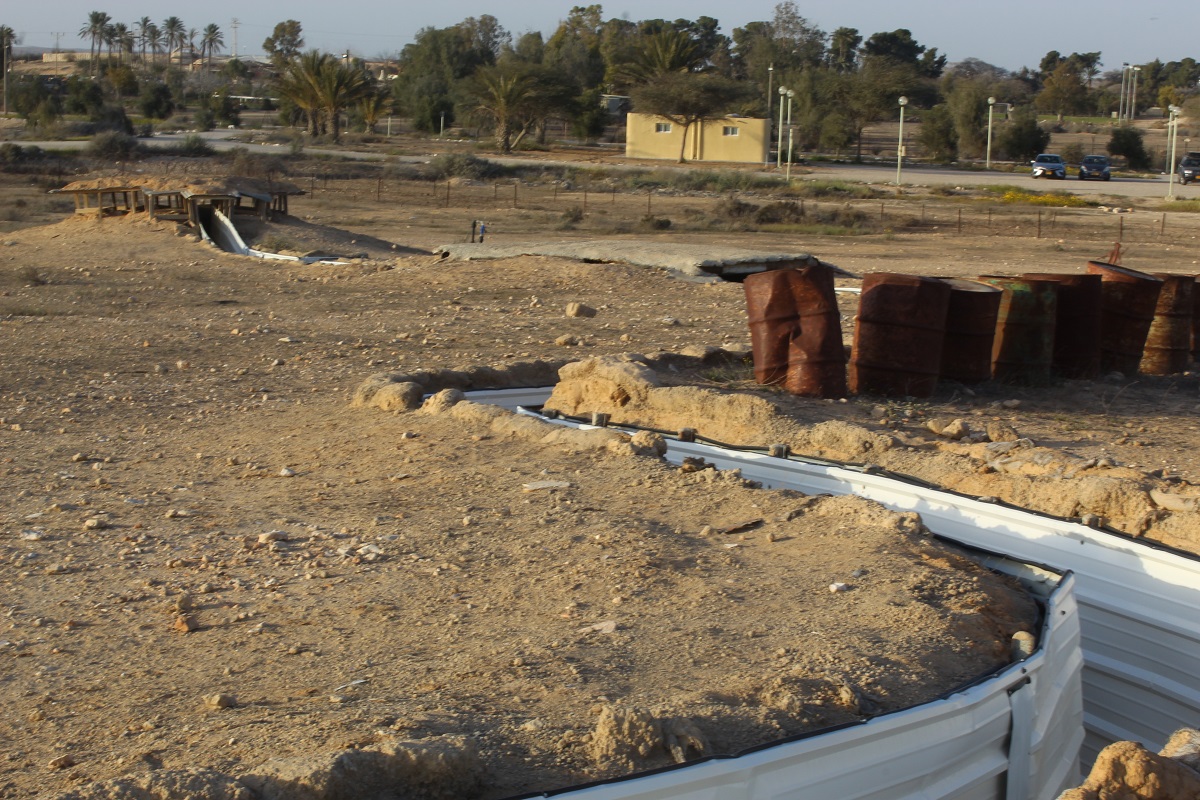
… where even the most hyperactive, the most impatient, hard to please and allergic to history and museums children will love to run around. But don’t forget to go through the costume room before, so that they can do so dressed as a soldier or a pioneer with their fake wooden guns.
An outing that both children and adults will enjoy
But don’t think Mitzpe Revivim is just for children. I went there about 2 weeks ago with a group of about 20 adults involved in tourism in the area. To my surprise, most of them, although long time local residents, didn’t even know the place existed and it was amazing to see that they reacted to the exhibition with the exact same excitement and enthusiasm as the teenagers I had been guiding 20 years ago. As always, it was quite hard to tear us apart from the Mitzpe in order to carry on with the tour. Which goes to show that if Mitzpe Revivim is an absolute must for families with children, adults will also enjoy the place very much.
Opening hours
Mitzpe Revivim is open every day from 10.00 to 16.00 (last entrance at 14.00). During the week, it is better to call in order to check it will be open as they have to close when groups of soldiers are visiting.
They might adjust the hours for the summer (they have actually already started offering some night tours with lanterns), but I find that between the movie, the caves and the rooms, it is totally bearable to be there even during the hot hours.
Call 050-8996886 or 08-6562570 in order to ensure it is open
How to get there

Mitzpe Revivim is on road 222. Despite the road signs telling you that the entrance is after the actual kibbutz Revivim, just before Retamin, the gates on this road have recently been closed due to too many cases of agricultural theft. The entrance is now throught the modern day Kibbutz Revivim (one of the biggest settlement in the Ramat Negev area,. home to some 900 inhabitants). While driving through the kibbutz, don’t miss the park of about 20 “designed trees”.
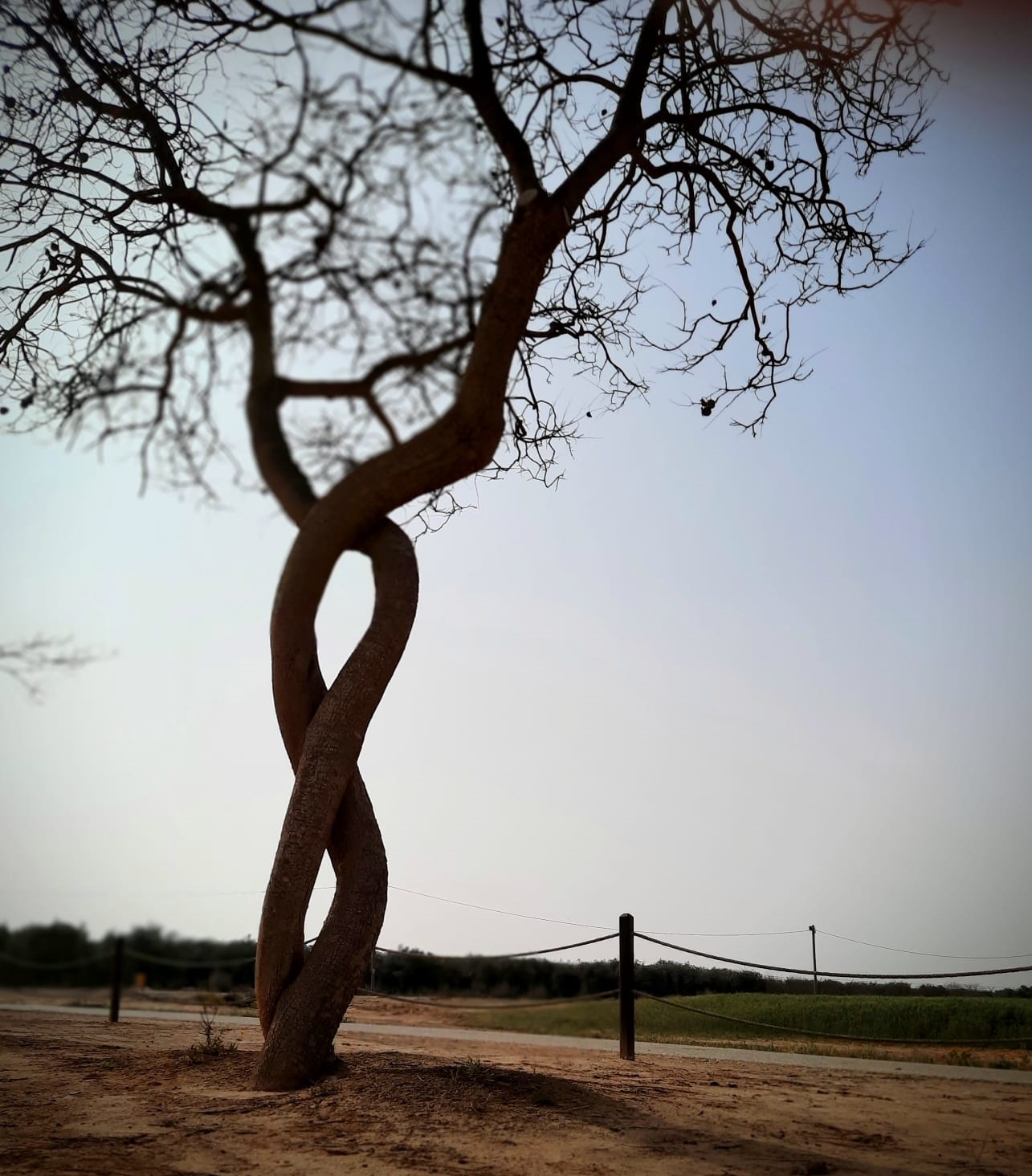
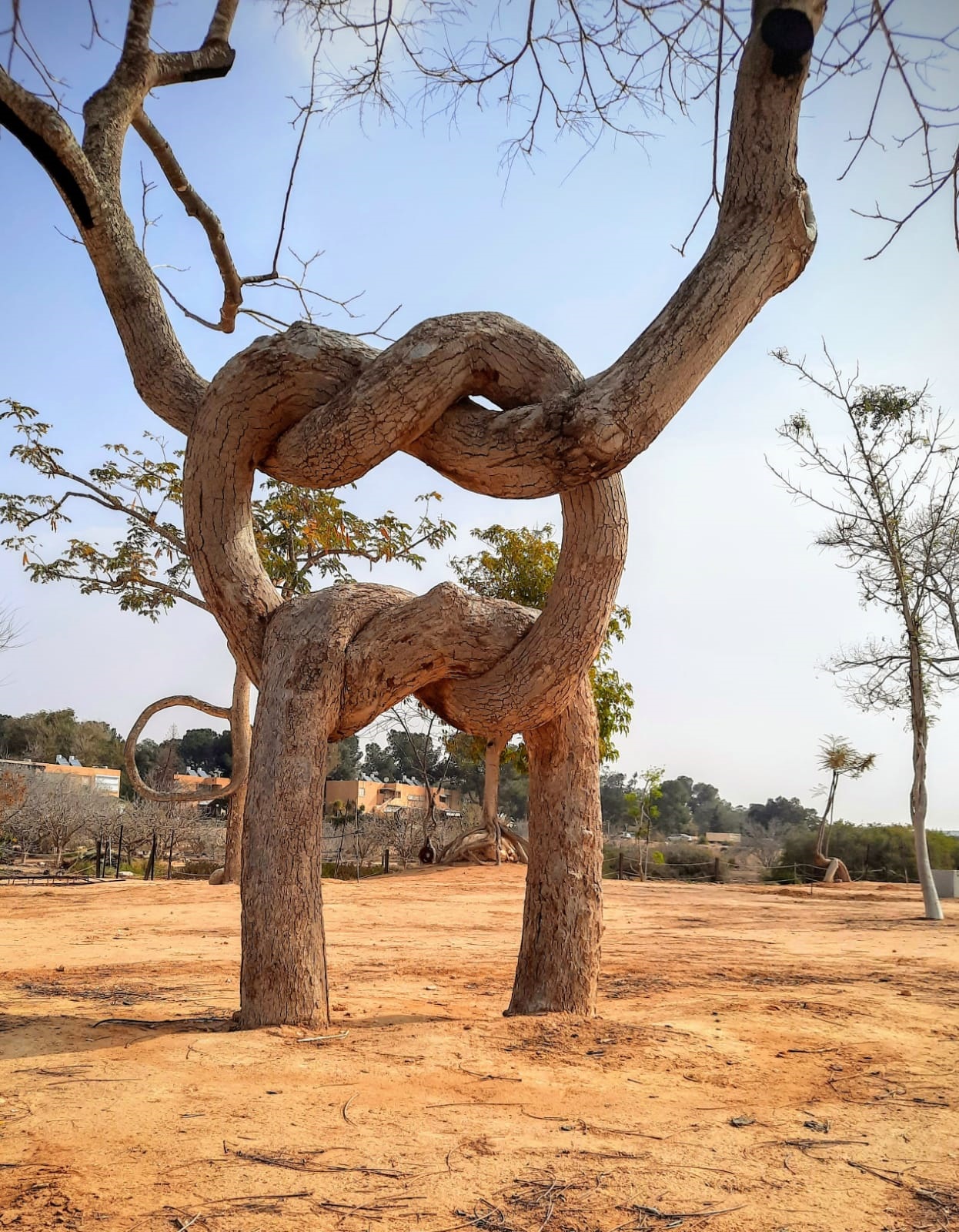
Other things to do in the area
Mitzpe Revivim is about 35 minutes from Beer Sheva, 25 minutes from Yeruham, and Sde Boker. It is a great stop if you are on your way to Mitzpe Ramon.
– During the spring time, around February and March, the Revivim river bed is home to the desert Irus.
-Park Golda is 5 minutes away. Great for a picnic. Named after Golda Meir who was a frequent guest of the Kibbutz since her daughter was a member. You can also visit her archives inside the kibbutz (needs to be pre-arranged).
– Wine testing in Rota farm – 5 minutes
– Camel riding and Bedouin hospitality in Sfinat HaMidbar – 5 minutes
– Agricultural Research and development center in Ashalim, solar farms and French commando memorial (20 minutes)
– Sand surfing and Nabatean city of Shivta (30 minutes away)
This post is also available in:
 Français
Français
Author: Marion Krivine
French owner of Krivine Guesthouse in Midreshet Ben Gurion, together with my British husband John. A little piece of european greenery in the heart of the Negev Highlands, Israel. I have set out on this journey in order to provide our guests with the most accurate, up-to-date and comprehensive guide of the area. View all posts by Marion Krivine


A Google map would be most useful.
Ira what a geek you are! Excellent suggestion, I just wouldn’t know how to do it!